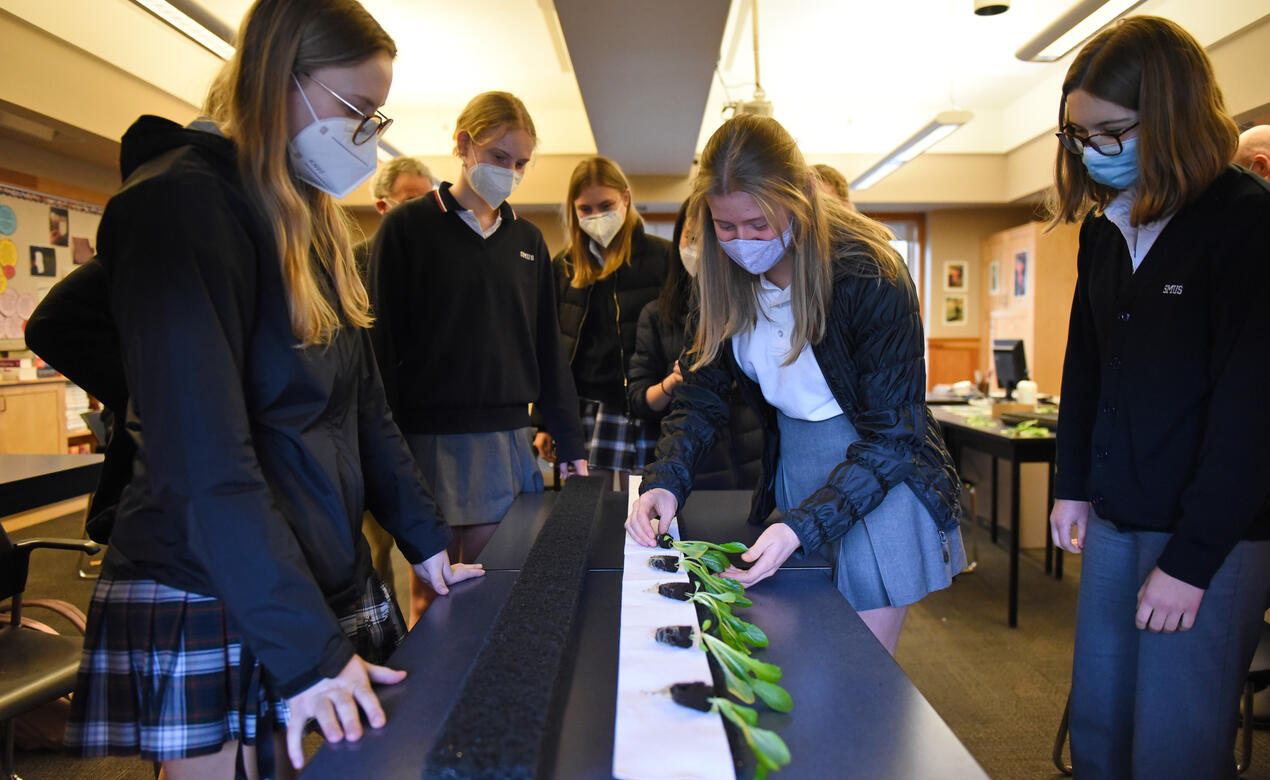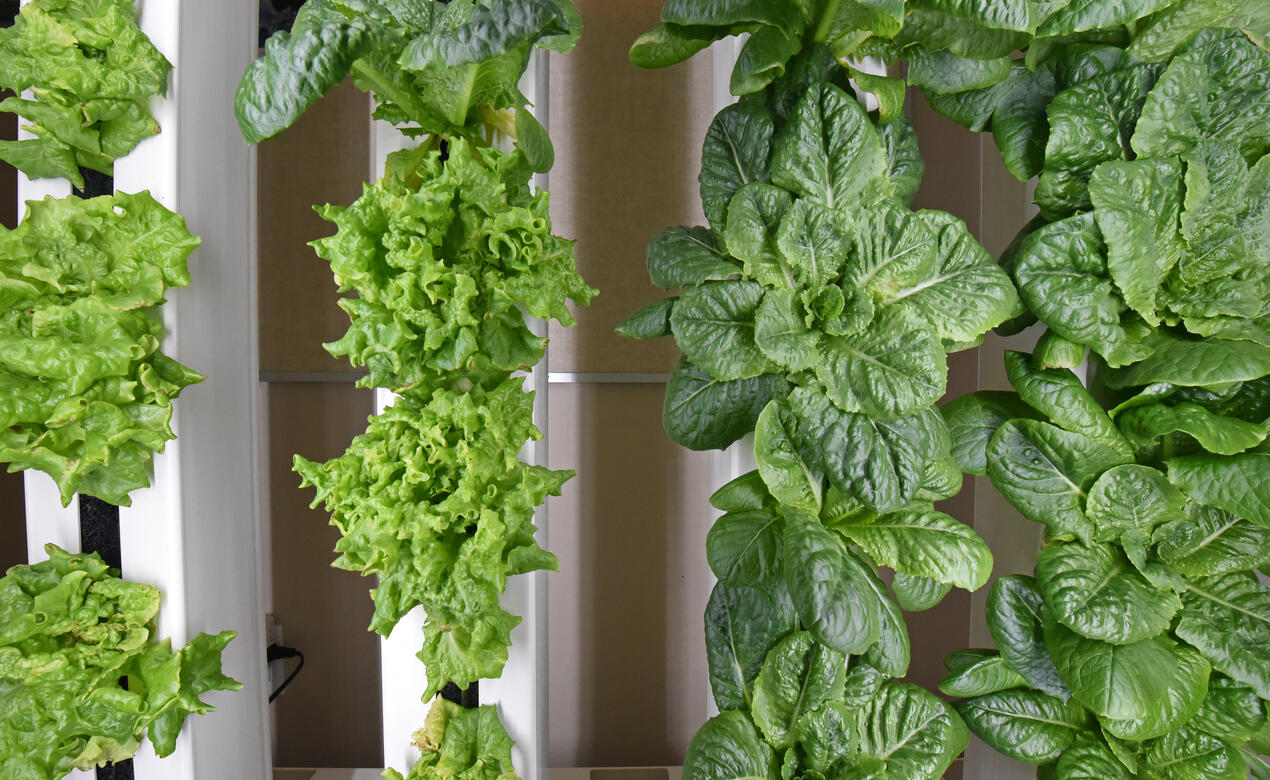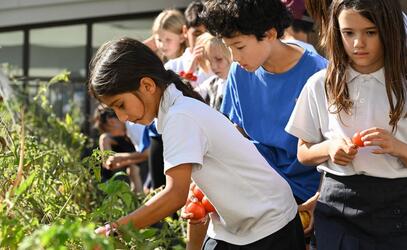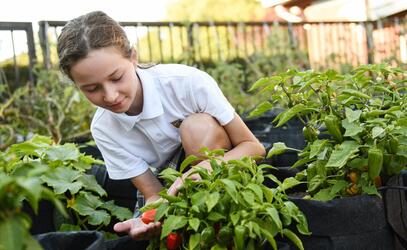
For years, sustainability and supporting environmental causes have been priorities for our students and our school. These passions have become woven through our school community in the shape of the Streamkeepers Club, the E-Team, Eco-Warriors, Green Teams and more.
But with the impacts of climate change becoming more noticeable every year in Victoria, and Floreat, our strategic plan, prioritizing sustainability, our school as a whole is taking larger steps to formally ensure our students and our school are prepared to be leaders in sustainability.
“This is a cause many students are passionate about, and one of my hopes is that their passion kindly and enthusiastically infiltrates all parts of the community to help make all parts greener,” says Craig Farish, SMUS’s sustainability coordinator. “The students who are in physics or who are on the basketball team or who are in the band are also interested in sustainability. They can bring their level of enthusiasm and expertise back to the broader community to make changes.”
This past year, the Senior School Green Team became the more formalized Green Council. And the Environmental Sustainability Committee was created at the Board of Governors level to explore environmental sustainability initiatives related to both physical spaces and academic programming at our school.
Indoor Growth
As Keith Driscoll wrote earlier this school year, we are currently undertaking two assessments – an engineering audit related to our buildings (including emissions and efficiency), the other related to how environmental sustainability plays a part in our curriculum. In the meantime, however, students and faculty are continuing to take steps to explore what the future of sustainability can look like at SMUS.

One of the projects, tied to student learning, is in partnership with our catering company. They recently acquired a vertical farming wall for the community to help students learn about growing their own food.
“The idea was for us all to learn about food systems, where food comes from, how much you can grow, how the hydroponics system works,” Craig says.
The vertical farming wall, called a ZipGrow Education Rack, is fitted with 16 vertical towers, inside which there’s room to hold 10 plants each. LED lights are positioned to provide 14 hours of “sunlight” each day and a hydroponics system constantly drips water and fertilizer through the towers.
“We’re planting just like we would outside in a garden row, except there’s no soil and it just happens to be vertical,” Craig says.
Currently, the Senior School Green Council is trialing the ZipGrow system to learn how to use it. They are growing two different types of lettuce, and have started to prepare seedlings to grow Swiss chard, spinach, kale, cilantro, mint, basil and oregano next.
“The cool thing is the students are involved in everything, from planting the seeds to transplanting the seedlings. They’re learning about hydroponics and how much water and sunlight they need,” Craig says.
“The beauty of a system like this is it provides really diverse ways for students to engage with learning from it. Even if you don’t like the plants and even if you don’t want to be a farmer, you can enjoy building it, or you can like the physics and mechanics behind it. Students can connect with it in a lot of different ways.”
In a couple of weeks, students will be able to harvest their first crop of lettuce and, hopefully, enjoy a salad lunch that celebrates a successful and broad learning experience.
Beyond the Green Wall
The educational benefits that stem from the vertical farming wall extend well beyond the bounds of the Green Council. Craig says there is potential for educational opportunities for students from Kindergarten to Grade 12, and these can be embedded in science class, economics class, art class and more.
“One of our business classes came by to explore what this would look like as a business model: would it be possible to grow and sell locally grown, organic produce year-round using a hydroponic system?” he says. A Senior School art teacher, inspired by this vertical system, is now attempting to design and build a rotating circular garden with a light in the middle.
As the school, through the efforts of the Environmental Sustainability Committee, the Green Council, and other student groups, continues to plan for the next generation of sustainability at SMUS, Craig says there is a lot of optimism around the possibilities.
Further embedding sustainability and the environment as part of student learning K-12 is a natural step for the school. Craig says it aligns well with the type of skill-based and personalized learning that we currently provide.
“I remember hearing once, ‘The role of the teacher is to put interesting puzzles in front of students and then get out of the way.’ I really like that way of thinking with the ZipGrow system. We’re all learning from this, and I like that we’re allowed to try, and make mistakes with real implications: plants live or die, pests arrive or they don’t,” he says. “I love the idea of a hands-on project like this because the curiosity and questions that spiral out of it can have positive impacts all across the school. I think that’s freeing for students to be able to just embrace something and explore it in a creative way.”


